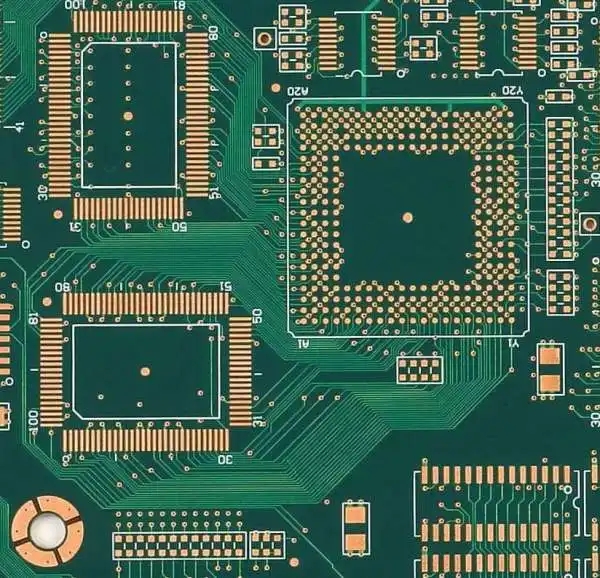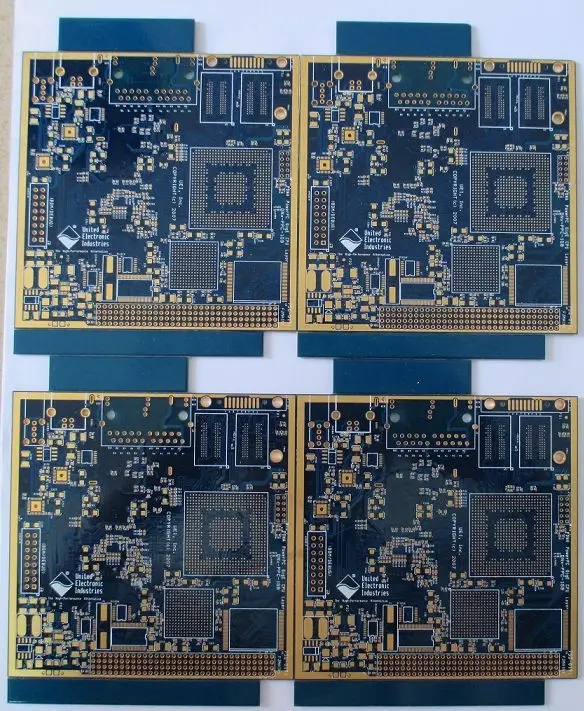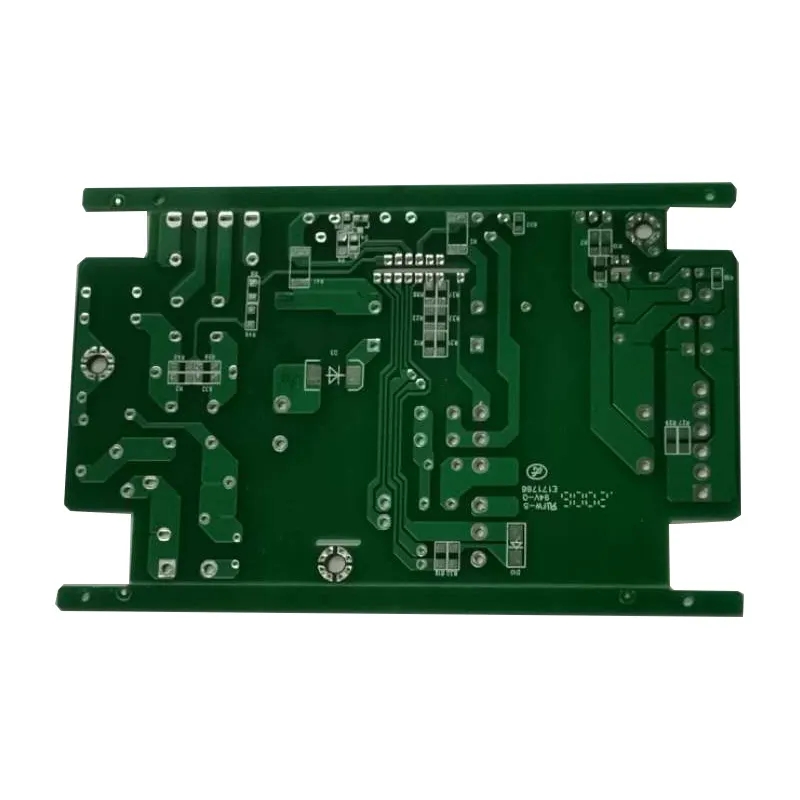
Circuit board factory explains how industrial AI enables semiconductor chip manufacturing
In 1971, Intel invented the world's first commercial microprocessor 4004, announcing the arrival of the era of integrated circuit equipment; In 1979, 8088 microprocessor was born; In 1981, the first personal computer (PC) based on 8088 was born, so that mankind really entered the computer era.
At present, the carrier of microprocessors is silicon semiconductor, whose integration degree ranges from micrometer level, submicron level to nanometer level and even nanometer level. When the nanometer era or the nanometer era gradually reaches its limit, people are expected to welcome the microprocessor technology of atomic graphene or other two-dimensional materials, and finally look forward to the microprocessors and quantized computers of quantum and electronic levels. Microprocessor has become an ideal normalized intelligence core of artificial intelligence (AI) because of its basic characteristics such as small volume, exquisite structure, unlimited expansion, and extremely low price. Thus, human beings began the AI centered modern computer knowledge revolution, digital revolution, intellectual revolution, information revolution and industrial revolution. Therefore, we usually define the starting age of AI as the 1970s. We can imagine the role of semiconductor industry in the development of AI.
The industrial AI technology entering the Industry 4.0 system will overturn the traditional factory production and manufacturing mode. As the most complex, advanced and expensive manufacturing industry, semiconductor chip manufacturing will also be the first to use industrial AI technology to further improve the production efficiency, product yield and other key indicators of semiconductor chip manufacturing. Therefore, the development of industrial AI and semiconductor industry can be said to complement each other. Industrial AI can apply the integration of manufacturing technology and digital technology, intelligent technology, and network technology to the whole life cycle of chip design, production, management, and service in the chip manufacturing process, and conduct perception, analysis, reasoning, decision-making and control in the manufacturing process, enabling semiconductor chip manufacturing. The following is a brief exploration of what aspects industrial AI will enable semiconductor chip manufacturing.
Visual AI
With the semiconductor manufacturing process moving towards below 10nm, the number of single chip transistors has reached tens of billions, and the processing accuracy is getting smaller and smaller. Therefore, chip manufacturing requires extremely high detection accuracy. In this context, manual visual inspection cannot meet the quality inspection requirements, and the entire manufacturing process almost depends on machine vision. On the one hand, visual AI continuously improves the accuracy of optical resolution, on the other hand, it plays a key role in graphic analysis and comparison, graphic judgment, etc.
In addition to quality inspection, other visual AI will also play a role in chip manufacturing. For example, Optical Proximity Correction (OPC) is a lithography resolution enhancement technology that uses visual AI calculation methods to correct the graphics on the mask, so that the graphics projected on the photoresist can meet the design requirements as much as possible. This technology is similar to the face recognition and intelligent beauty functions of our mobile phone cameras. OPC technology is also a technology to compensate for the decline of the imaging quality of the lithography system by changing the amplitude of the transmitted light of the mask. Optical proximity effect correction was first introduced into the lithography process at the 250 nm technology node. OPC software modifies the optical proximity effect of the design graphics according to the predetermined rules, which are summarized from a large number of experimental data and will change with the change of lighting and process conditions, so it is very complex. With the development of computing technology, revision rules can be realized through AI algorithm and play a key role.

Automation AI
Semiconductor chip manufacturing has a high degree of automation. In addition to the automation of its own production equipment, it also assists the automated logistics system and automated production software system. For example, CIM, MES, MRP, EAP, AMHS, etc., all these systems do not operate in isolation, but are related and interact with each other.
At the initial stage of the chip factory construction, it is necessary to carry out preliminary planning for the factory's automation system, such as planning AMHS (Automatic Logistics Handling System) to achieve more efficient logistics handling lines, and at the same time, to carry out the layout of production equipment. This is a very complex project, which requires a large number of empirical data, complex algorithms and models for simulation to achieve optimal results. There are already very professional companies in the industry that provide AMHS hardware systems and automated software systems for chip manufacturing plants, and provide planning and design services. The role of AI technology in this complex process cannot be underestimated.
Logistics planning is also the first step of chip manufacturing automation. The chip manufacturing process is very complex and delicate, requiring precise control. In addition to reasonable logistics planning and production dispatching, each step of chip manufacturing needs to be accurately controlled and problem analyzed to ensure stable yield of products. Therefore, chip manufacturing requires enterprises to move from manual processes to automated processes, eliminate repetitive and monotonous tasks, avoid human errors, and achieve efficient and stable production more quickly. To meet this demand, the semiconductor industry uses AI enabling automation to enable enterprises to apply automation to a wider range of tasks
MES (Manufacturing Execution System) system is the most mature and indispensable system for semiconductor chip manufacturing. A common MES system needs to support production scheduling, product tracking, quality control, process debugging, equipment failure analysis, and network report management. Process, design, operation, and management personnel generally need to view and maintain.
In the 21st century, specialized MES system providers, such as IBM, have emerged to provide SIView solutions. SIView may be the only semiconductor MES system that can compete with applied materials. At present, most of the 12 inch wafer MES systems in the world are provided by Applied Materials and IBM. 4~8 inch wafer fabs mostly use PROMIS. With the rise of cloud computing and cloud storage, it is also a trend to provide light MES products in the form of cloud SaaS, but whether cloud MES conforms to the characteristics of the semiconductor industry still needs to be verified by the market.
In addition, the automation of semiconductor production equipment itself will further utilize AI enabling. For example, Lam's Equipment Intelligence solution integrates machine learning, AI, automation, and self sensing hardware and processes, which is expected to improve production efficiency, improve product performance, and accelerate industry innovation.
This solution uses industrial AI technology to help in three aspects:
1) Accelerate equipment design. Digital twin technology can reduce the learning cycle of the physical world and create more "one time success" products. Once the design is appropriate, 3D printing can be used to realize parts that cannot be easily manufactured by traditional technology;
2) Accelerate process development. Virtual manufacturing and virtual process development can develop optimized cell processes and integrate them into the overall process solution before experimental design;
3) Accelerate the improvement of yield. Machine learning can quickly identify chamber mismatch and process parameter changes, so as to find and solve problems as early as possible, and ensure that the manufacturing process can maintain consistency over time; Virtual reality and augmented reality technologies, combined with step-by-step guidance, can help ensure high-quality installations and services.
Big data AI
Semiconductor is a typical data intensive industry, each link will produce a large amount of data. The value of a large amount of semiconductor test data needs to be explored and utilized, because it can not only improve the test efficiency, ensure the product yield, but also optimize the test plan and control the cost through data analysis.
In this sense, mining the data value and potential of semiconductor testing through cloud computing, AI, machine learning and other advanced technologies is undoubtedly the important trend of the next industrial cluster.
Industrial Internet AI
As an important cornerstone of the fourth industrial revolution and one of the core driving forces for the digital transformation of the manufacturing industry, the industrial Internet involves almost all frontier fields, including AI, cloud computing, blockchain, big data, and edge computing. In semiconductor chip manufacturing, production equipment is the most important. Advanced Process Control (APC) is one of the most in-depth areas of semiconductor manufacturing application. On the one hand, it can achieve accurate control of the process of equipment; On the one hand, it can realize rapid diagnosis and fault handling. The vigorous development of the Internet of Things, big data and AI in the industrial Internet has opened up more possibilities for APC. At present, semiconductor production equipment has achieved EAP networking in the production line, which can realize remote operation and information interaction. On this basis, the industrial Internet can learn the characteristics of faults from historical data by means of machine learning and AI analysis, make decisions through similarity comparison, realize the digitalization of expert knowledge and experience, automatic diagnosis and location, and realize the prediction of faults and anomalies; In addition, the Industrial Internet has realized the writing and query of 3000 points/second/machine mass data, real-time monitoring of key process indicators, cluster management of multiple devices, and stability control of fault detection and classification and key output indicators for semiconductor equipment process monitoring and process analysis; At the same time, the industrial Internet enables the analysis and optimization of equipment operation efficiency to realize automatic data collection of the system, automatic monitoring of equipment operation and parameter collection, visualization of production data, transparency of production process, and improvement of operation and decision-making efficiency. Through data analysis, the reasons for efficiency loss are directly given, so as to improve the speed of problem positioning, and achieve refined and lean equipment management. With the development of AI technology, it is believed that the OEE will be further improved. At present, semiconductor manufacturing enterprises are most worried about security issues such as information leakage and hacker attacks. Therefore, the promotion of industrial Internet AI technology in the semiconductor industry must face the huge challenge of security.
summary
Semiconductor manufacturing industry is a pearl of high-end manufacturing industry, representing the world's most advanced industrial manufacturing. Its characteristics of high complexity, high precision and high-tech content provide a unique application scenario for AI applications. At present, China's semiconductor manufacturing industry is stepping up to catch up with the world's advanced level, and more needs industry collaborative innovation, relying on various forces to improve the pace of catching up. In the tide of "Made in China 2025" and "Industry 4.0", semiconductor chip manufacturing can achieve leapfrog development and go faster and farther only by enabling the rapid application of AI means
The circuit board manufacturer, circuit board designer and PCBA processor will explain to you how the circuit board manufacturer introduces how industrial AI enables semiconductor chip manufacturing.







